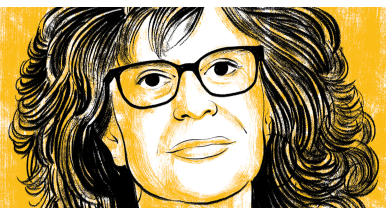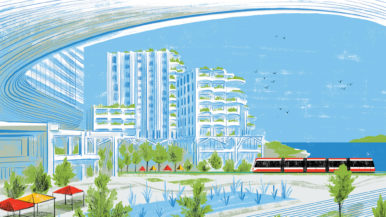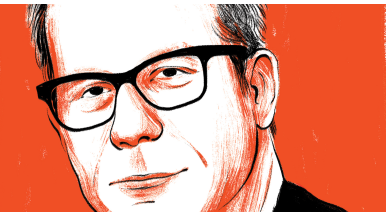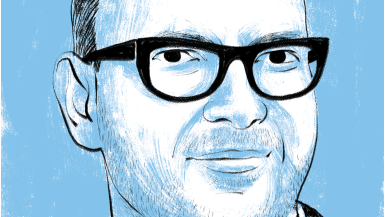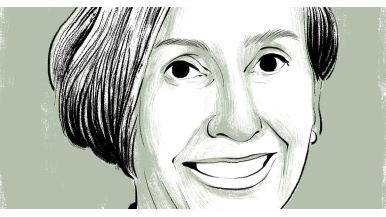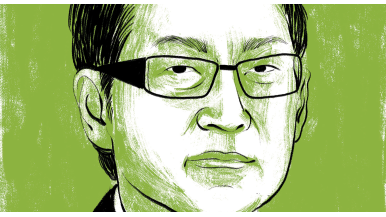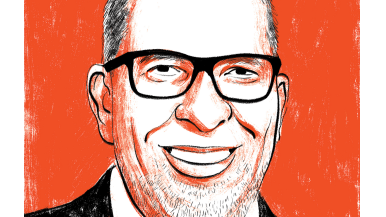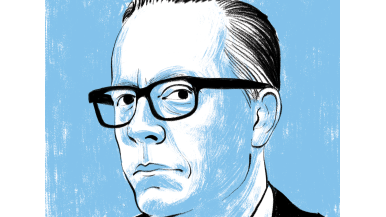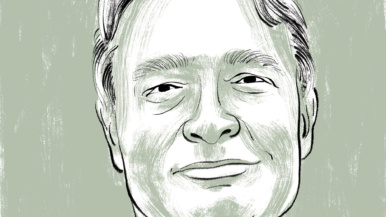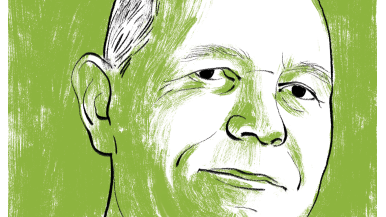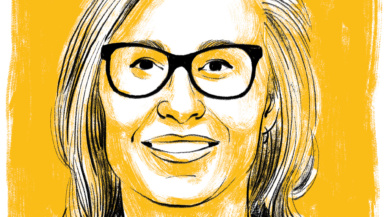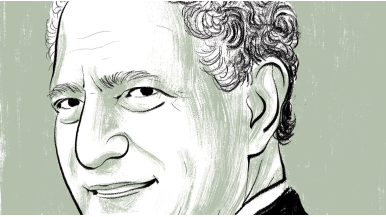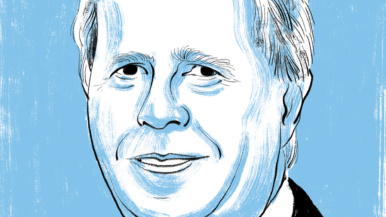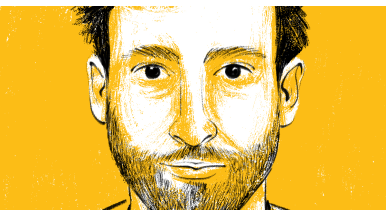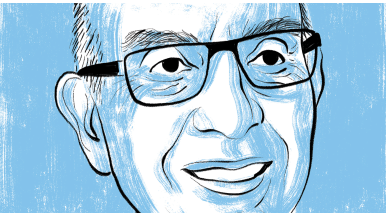Sidewalk Labs is Toronto’s best hope for sustainability

The Maori say we walk backwards into the future: we are so focused on our past that we do not properly experience the present, so we stumble and fall over predictable future hurdles. I hope this will not be the story of Sidewalk Labs’ plan for Quayside.
The focus on the past, and the fear that it produces, is compelling. Concerns surrounding Sidewalk Labs—involving data privacy, how big businesses operate, and whether Toronto’s waterfront has been developed with equity in mind—are all grounded in fact. But we have current problems that need urgent intervention if we are to avert severe social, economic and public health crises in the future.
Toronto residents struggle with housing affordability, transit, pollution and social inclusion. We are Canada’s capital for income inequality, and recent reports show that the majority of households cannot afford to buy and maintain a condo. Add climate change to the mix, with its flooding, heatwaves and diminishing resources, and it’s clear we will have to battle in the future to sustain Torontonians’ lifestyles.
Our growing population will require more energy, water, housing and transit. We will produce more waste and pollution at a time when our water and sewage systems are struggling to cope with everyday use, let alone extreme weather events. As our population ages, more people will need support and long-term care. This will put our social infrastructure and our health infrastructure at risk. Toronto’s affordability crisis will push people into the suburbs, increasing our reliance on cars and exacerbating our climate crisis. And because both the city and the province have minimized tax increases, it’s likely that individuals, families and communities will be asked to bear the burden of dealing with the impacts of demographic and environmental change. These new social responsibilities will come at a time when employment rights are decreasing, employment is increasingly precarious, jobs with benefits and pensions are becoming more scarce.
Business as usual will not be enough for us to meet our challenges. In order to thrive, we need to invest in technological and social innovations that facilitate the development of resilient, equitable, inclusive communities. Two thirds of our financial resources sit in the private sector. We’ll all need to work together if we are to have a sustainable future. Societies succeed when they are united.
Sidewalk’s proposal for an innovation hub offers us an opportunity to create solutions in housing affordability, and transit, and respond to global warming. The Quayside proposal offers a model for inclusive growth, which could help meet the needs of Toronto’s expanding population. As a policy and innovation sandbox, it is not perfect, but it gives us a place to prototype ideas. I have seen no other plan that deals with these urgent issues in a comprehensive way.
The development is designed to use cost-effective, sustainable materials, like engineered timber produced at an Ontario factory. This business model will increase affordability and could allow Quayside to be a mixed-income community, with at least 40 per cent of its residents in middle- to low- income brackets. It will be designed for families, for seniors, for density, and for mixed residential and office space. All of these plans could make Toronto more affordable for more people, and reduce the number of people commuting from the suburbs.
On a larger scale, Sidewalk’s plan for Quayside could help produce scalable strategies that Ontario could use to combat climate change. They propose a low-carbon, resilient neighbourhood that uses a number of technological innovations to generate power. There are also plans for active stormwater management, which could form the basis or a new system to curb the effects of flooding. Then there are innovations such as modular pavement systems, which can be changed and removed by an individual; screening technology that allows people to stay outdoors in sun, rain and heat; anaerobic digestion of organic waste to produce energy; pay- as-you throw technologies to reduce garbage; and the possibility of driverless cars.
The project will collect data and use it to improve building performance and the function of social spaces. It will help gauge the performance of new building techniques and infrastructure and power designs. Currently, industry harvests data from us in various ways and we do not have the safeguards that we need. Governments also share data with industry—recently the city of Toronto developed a data-sharing agreement with the Google-owned navigation app Waze. There is an opportunity to develop robust processes for data collection and use that give better protections than we currently have.
We could try to solve our problems without Sidewalk Labs. We have academics, entrepreneurs and developers who could take this on. We could use the time to fight the fights of yesterday. We could worry that we do not have the ability to work with big business while simultaneously believing we can meet our challenges by ourselves. We could focus on issues such as privacy while seemingly forgetting that our current economic, social and health problems are a matter of life and death for some. Or we could use the process as a way of evolving our thinking and our abilities as a city.
A transparent discussion of the Sidewalk proposal could give us an opportunity to build consensus on our needs while further developing our ability to work with the businesses that increasingly control the world’s wealth. It could help us learn how to stop walking backwards into the future.
This story originally appeared in the September 2019 issue of Toronto Life magazine. To subscribe, for just $29.95 a year, click here.
